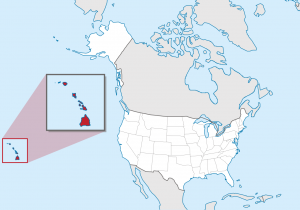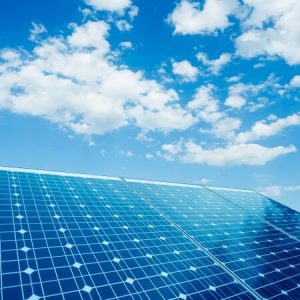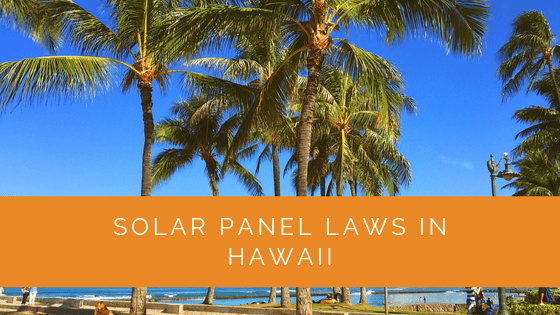 Hawaii’s energy industry has been quickly changing to adapt to solar power. This is a direct result of the high energy costs related to providing electricity to the island state. As a result, the state now boasts an abundance of solar resources and one of the largest per capita percentages of solar-powered homes and businesses in the United States.
Hawaii’s energy industry has been quickly changing to adapt to solar power. This is a direct result of the high energy costs related to providing electricity to the island state. As a result, the state now boasts an abundance of solar resources and one of the largest per capita percentages of solar-powered homes and businesses in the United States.
Contents
- 1 Key Takeaways
- 2 Solar Energy in Hawaii
- 3 Brief History Of Solar Power In Hawaii
- 4 New Solar Panels Laws
- 5 Solar Payback Credit For Using Solar Panels In Hawaii
- 6 Case Study: Residential Solar Panel Installation in Hawaii
- 7 Expert Insights From Our Solar Panel Installers About Solar Panel Laws in Hawaii
- 8 Experience Solar Excellence with Us!
Key Takeaways
- Hawaii is rapidly adopting solar power due to high energy costs and has one of the largest percentages of solar-powered homes and businesses in the United States.
- The state aims to achieve 40% renewable energy use by 2030 and 100% renewable energy by 2045, with solar playing a significant role.
- In 2019, HECO introduced the ‘Customer Grid Supply Plus’ program, allowing residential solar customers to connect to the grid, use solar energy as their primary source, and receive credit for excess energy, but with unique rules for distributing solar payback credits.
Solar Energy in Hawaii
Hawaii’s cost to import traditional energy sources, such as coal and petroleum, is up to four times as high as states on the mainland. This means that Hawaii is one of the states that have plenty of motivation in its efforts to become a top user of solar energy in the country, and the state is accomplishing this goal with huge incentives for property owners who choose to install solar panels.
Hawaii was one of the country’s first states to meet the socket parity for photovoltaics, and because of its location, the sun offers an abundance of natural energy.
As previously mentioned, most of the island’s solar energy is distributed through solar panels in Hawaii. The grid on the island has been finding ways to handle this unique challenge by creating solar technology that allows for the balancing of energy into areas of the island with huge amounts of solar energy.
Solar energy has significantly contributed to renewable energy production in a particular island state. A notable portion of the state’s total renewable energy comes from solar sources on this island. Furthermore, solar energy also represents a substantial percentage of the overall energy sales within the state. This highlights the growing importance and impact of solar energy in the region’s energy mix.
Brief History Of Solar Power In Hawaii
With its renewable portfolio standard, the state aims to have renewable energy use on the island to make up 40% of the total energy used on the island. This is one of two goals, with the deadline for meeting this goal scheduled for 2030. The second goal is to be at 100% renewable energy by 2045.
The electrical grids that service the state are spread throughout the islands and are relatively smaller than those seen on the mainland. When contractors attempted to build distributed solar grids in certain areas, it caused problems.
It eventually led to HECO (Hawaiian Electric Company) rolling back its net-metering program. This program offered solar home and business customers reimbursements for the extra electricity they returned to the electrical grid. Not too long after this rollback, solar customers could no longer justify the costs of installing solar panels, and the island saw a sharp decline in solar energy use.
New Solar Panels Laws
In 2019, HECO reversed its stance once again. The new law allows solar energy customers to connect to the grid again and receive credit for all of the energy their properties return to the grid.
Referred to as the ‘Customer Grid Supply Plus,’ it allows residential solar customers who do not use batteries to use solar energy as their main energy source. Extra electricity is returned to the grid. However, there are a few caveats to this law that solar energy customers should be aware of.

Solar Payback Credit For Using Solar Panels In Hawaii
Homeowners and business owners can choose to purchase a solar energy system that includes solar panels, or they can choose to lease. Studies have shown that property owners who choose the purchase option see the greatest return on their investment over time. However, choosing to pay for solar panels requires a huge upfront payment.
The state has unique laws on how the ‘solar payback’ is distributed among customers. As previously mentioned, the Customer Grid Supply Plus program allows customers to use the solar energy generated by their solar panels, but the excess energy is given HECO. HECO then distributes this excess solar energy to other customers.
So, what does this mean? Under this program, customers can use as much solar energy as their system creates if the sun shines. Once the sun goes down, the extra power is recycled.
In most other states, customers are given complete credit for all their solar energy. Whatever energy they need during the night is canceled out by the energy they have already sent to the grid.
On the other hand, in Hawaii, customers receive what is known as a reduced-cost credit for the extra electricity. For example, if a customer lives on the island of Maui and is paying $.20 per kWh (kilowatt hour), another customer on Oahu may only be $0.159 for each kilowatt per hour.
The reduced cost credit makes it very difficult to estimate just how much a customer will be saving, and this is one of the reasons why solar customers in Hawaii are calling for a change in how HECO calculates and credits customers for solar energy and solar PV panel use.
Case Study: Residential Solar Panel Installation in Hawaii
Background
As part of our commitment to supporting Hawaii’s renewable energy goals, Solar Panels Network USA undertook a residential solar panel installation project in Honolulu. The project was designed to align with Hawaii’s ambitious targets of achieving 40% renewable energy use by 2030 and 100% by 2045, utilizing the latest solar panel laws and incentives.
Project Overview
Our client, a homeowner in Honolulu, was motivated by rising energy costs and the state’s generous incentives to transition to solar energy. The objective was to install a high-efficiency solar panel system that would significantly reduce the household’s reliance on traditional energy sources and cut down monthly energy expenses.
Implementation
The project began with an extensive site assessment to determine the most effective placement and configuration of the solar panels. Using advanced modeling tools, we designed a system that maximized solar exposure and energy production.
Key steps included:
- Initial Consultation and Planning: We conducted a detailed consultation to understand the homeowner’s energy needs and preferences.
- Site Assessment and Design: Utilizing cutting-edge technology, we mapped out the roof space to optimize solar panel placement.
- Installation: Our skilled team installed the solar panels with minimal disruption, ensuring all components were integrated seamlessly with the existing grid infrastructure.
- Grid Connection: The system was connected to the Hawaiian Electric Company (HECO) grid under the ‘Customer Grid Supply Plus’ program, allowing the homeowner to receive credit for excess energy produced.
Results
The installation resulted in significant energy savings and reduced the household’s carbon footprint. The system’s performance exceeded initial projections, leading to lower energy bills and a faster return on investment.
- Energy Savings: The homeowner experienced a 70% reduction in monthly energy costs.
- Environmental Impact: The solar panel system significantly decreased the home’s carbon emissions, supporting Hawaii’s renewable energy targets.
- Financial Benefits: The installation increased the property’s value and provided substantial savings on energy bills over time.
Summary
This case study demonstrates how Solar Panels Network USA is leading the implementation of Hawaii’s new solar panel laws. By utilizing advanced technology and adhering to the latest regulations, we provided a sustainable, cost-effective solution for a homeowner in Honolulu. Our commitment to quality and sustainability ensures that we continue to support Hawaii’s ambitious renewable energy goals, one installation at a time.
Expert Insights From Our Solar Panel Installers About Solar Panel Laws in Hawaii
Hawaii’s progressive solar laws are setting a benchmark for renewable energy initiatives nationwide. These regulations not only address high energy costs but also push the state towards a sustainable future.
Senior Solar Installer
The ‘Customer Grid Supply Plus’ program is a significant step forward. By allowing residents to receive credit for excess energy, it incentivizes solar adoption while balancing the grid’s energy distribution.
Lead Solar Technician
As solar installers, we are thrilled to see Hawaii’s commitment to achieving 100% renewable energy. This vision is driving innovation and efficiency in solar technology, making installations more effective and beneficial for homeowners.
Chief Installation Engineer
Experience Solar Excellence with Us!
Trust in Solar Panels Network USA, where our seasoned experts deliver top-quality solar solutions for homes and businesses nationwide. With a legacy of countless successful installations and a commitment to sustainable energy, we’re your reliable partner in the solar journey. Ready for a brighter, eco-friendly future? Call us now at (855) 427-0058 and harness the power of the sun!
Map image by Wikimedia Commons User: TUBS / CC-BY-SA-3.0
About the Author
Solar Panels Network USA stands at the forefront of solar energy solutions, driven by a team of seasoned solar engineers and energy consultants. With over decades of experience in delivering high-quality solar installations and maintenance, we are committed to promoting sustainable energy through customer-centric, tailored solutions. Our articles reflect this commitment, crafted collaboratively by experts to provide accurate, up-to-date insights into solar technology, ensuring our readers are well-informed and empowered in their solar energy decisions.

